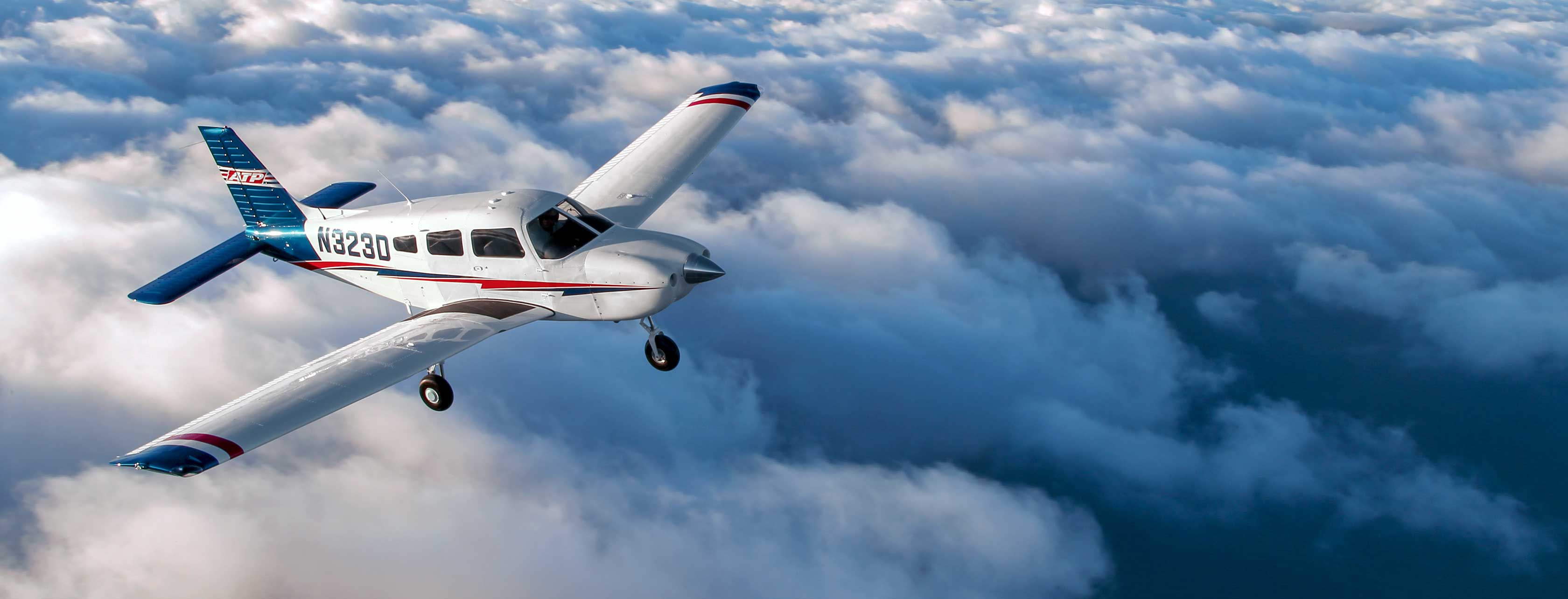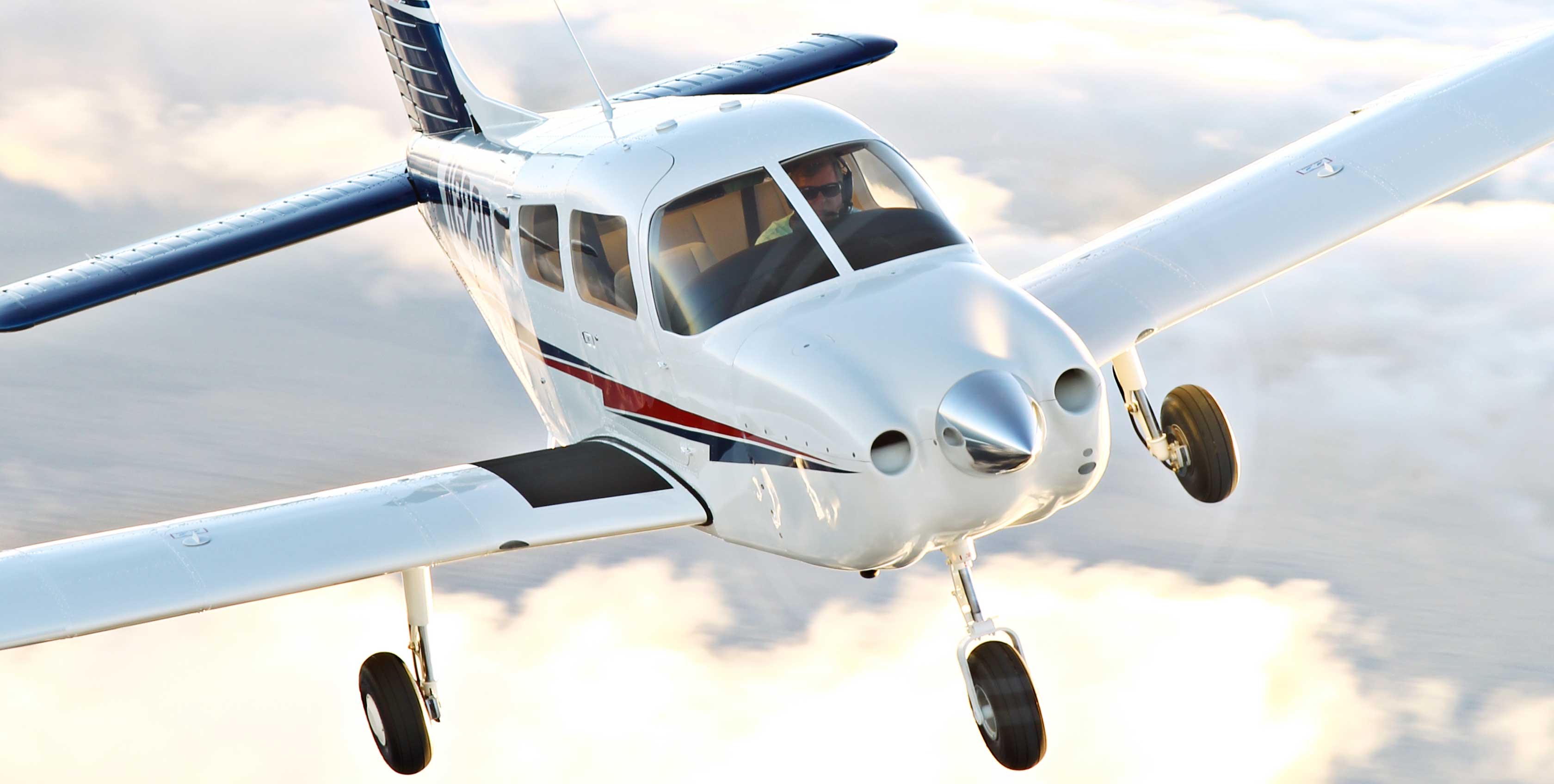Airline Transport Professionals You Can’t Argue with ATP’s Success
At this moment, somewhere in the sky overhead, an ATP student is earning a rating. Airline Transport Professionals’ 25- year record, its impressive success rate (each month, it graduates over 40 commercial pilots) and its experience flying more than 11,000 student hours monthly have all earned ATP a reputation as a top ab initio flight training academy. Its 25 training centers nationwide ensure that an ATP student is almost always somewhere in the sky.
I spoke with Director of Training Ben Gabriel to find out what makes this buzzing hub of activity such a success. “Training here works,” explains Gabriel. “We base our training on proven lesson plans, and we structure our programs to replicate the tempo and style of the professional pilot environment.” That formula works well: In 2008, more than 4,500 pilots acquired certificates and ratings at ATP training centers.
ATP’s model is unique among the sea of flight training alternatives. One component of its winning formula is its fixed-cost training. Pilots who already have a private certificate can train under ATP’s Airline Career Pilot Program and earn all the required ratings and certificates to qualify for employment with a regional airline. The 90- day program has a fixed price so there’s no guessing about how much training will eventually cost.
ATP has one of the most diverse training menus around. Most people know ATP as an airline training ground, but the selection of programs runs a wider and rather impressive range. A quick glance at ATP’s website confirms the incredible array of training tracks. Among the new offerings is a four-hour glass-cockpit training package in a Diamond DA40, which is designed to familiarize pilots with Garmin’s popular G1000 and includes a DA40 checkout. A Cessna Citation transition package, which includes high-altitude and high performance endorsements, allows pilots to fly a cross-country in the actual CE- 525 jet, not a simulator. ATP’s Regional Jet Standards Certification program trains pilots in systems common to Bombardier and Embraer regional jets, including CRM (crew resource management). Then there’s my favorite: ATP’s Introductory Training Flight package for first-timers, which includes a free, 15-minute, online training lesson, followed by an actual flight in one of ATP’s single-engine aircraft.
Two recent developments should push ATP further into its own training niche. First, ATP is scheduled to take delivery of 20 Diamond D-Jets in 2010. With the D-Jet fleet, ATP will become the first training academy to offer actual logged jet experience (not just simulator time) to its career pilot students. Second, ATP has partnered with Gulfstream Training Academy, which offers an internship program as an alternative to building time as a flight instructor. Gulfstream’s pilots undergo a three month indoctrination period of ground and simulator training in the Beech 1900. Following that, pilots begin their internship with Gulfstream International Airlines (GIA), flying turboprops that carry paying passengers. Pilots get six to eight months of “flying the line” in turbine aircraft within an airline environment while getting paid. ATP’s relationship with Gulfstream creates a unique real world training environment.
I asked Gabriel about the fact that few airlines are hiring and the current hiring environment seems somewhat dim. “The fact remains that more airliners are being produced than there are pilots to fly them,” answers Gabriel. “Retirement is going to be a huge factor. We don’t see it this second, but the FAA is saying it, and things will turn in favor of pilots.” Gabriel’s optimism comes from his own experience as an airline pilot and current instructor pilot on the Citation. “We’re in a cycle, and I advise pilots to be prepared for the next hiring boom.”
Ultimately, a training academy’s reputation rests on the shoulders of its graduates. With the highest ratio of airline placements to students, ATP can boast all it wants. Graduates enthusiastically report that “ATP is the way to go!” and “It wouldn’t have been possible without the awesome instructors at ATP,” cementing the training academy’s stature. It’s interesting to note that while critics point to the high cost of pilot training, many of ATP’s successful students spent less than $60,000 to complete their training.
When asked about ATP’s achievements in the training market, Ben Gabriel seems very matter-of-fact. “We save you money because we’re efficient,” he explains. “Each day, our students are doing something related to their flight training.” He suggests that students come to ATP with a solid work ethic and a strong sense of accountability and responsibility. “Airlines know our graduates,” finishes Gabriel. “With ATP’s emphasis on high-quality multi-engine experience and decision-making skills, ATP graduates will be most competitive in the job market.” With its nationwide training centers, its new relationship with Gulfstream Training Academy and its new fleet of Diamond D-Jets, ATP is difficult to beat.



